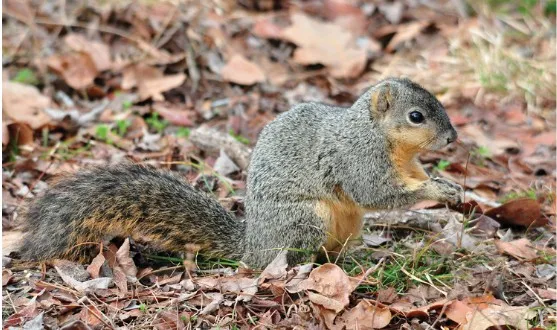This series provides answers to selected questions recently submitted to the UC Master Gardeners of Yolo County Help Desk.

Question: My cantaloupe and green bean plants are being eaten down to the ground by a pest. Any suggestions on a pesticide to use?
Answer: Before you can determine the best way to control any pest, you need to identify the culprit. Since your cantaloupe and bean plants are mature this time of year, it is highly unlikely they are being eaten to the ground by an insect or snail infestation. You would see leaves and possibly stems chewed, maybe some defoliation, but not complete destruction.
The likely pests are mammals such as rabbits, squirrels, voles, rats, or deer, if you live in deer country. Gophers generally eat the roots and pull a plant under the ground rather than eat them from the top. Traditional insect-targeted pesticides will not help, since mammals are unaffected by them. Instead, the best strategies involve barriers and habitat management rather than chemical sprays. Rodenticides and poisons are sometimes used in agricultural settings, but their use creates risks to pets, people, and non-target wildlife, so they are not a good fit for residential garden use.
Physical barriers are generally the best option for protecting your vegetables from mammals. It is important to identify the offending critter if you can. Control measures will obviously be different for different species. Spend some time just observing in your garden, including in the evening, to see if you can spot the intruder. You may also be able to identify your pest from its droppings.
A low fence of two to three feet with tight mesh, like one-inch chicken wire, can keep rabbits out. Bury the bottom six to ten inches to deter digging under. For squirrels, you will need to make a covered enclosure for the plants. For rats or voles, make an enclosure of half-inch hardware cloth that is completely enclosed at the top. Row cover or netting is easier to work with and may help to form a visual barrier, but any determined rodent could chew through it. The only dependably effective barrier for deer is an eight-foot fence.
Habitat modification in and around your yard may help to reduce populations of unwanted mammals. Reduce nearby brush, weeds, tall grass, or woodpiles that can shelter unwanted animals. You may want to speak with your neighbors about doing the same. Encourage natural predators (owls, hawks, snakes) by avoiding rodenticides and providing perches or nest boxes. Domestic pets, cats and dogs, may sometimes be a help as well.
Mechanical kill traps may be effective against rats and voles. Be sure they are not set in a location that can be accessed by domestic pets. The California Fish and Game Code limits the use of lethal traps for some species, so verify regulations in advance. Live traps are often viewed as a less cruel option. However, California regulations prohibit moving a trapped animal out of its normal range. That means you cannot move it to the country or a distant park, leaving killing it in a humane way as the only legal alternative.
In summary, try to identify the offender by observation. This is almost certainly a mammal, so physical barriers, traps, and habitat modification, or quite possibly all three used together, provide the best opportunity for protecting your plants. For further information, see Mammal Pests: How to Tell What’s Digging and Eating in Your Garden from UC Master Gardeners of Alameda County.
This article previously appeared in the Winters Express and Davis Enterprise.
If you have a gardening question, contact the UC Master Gardener Help Desk at 530-666-8737. Or send an email, with information regarding watering, sun exposure, details about your problem, and photos, when possible, to mgyolo@ucdavis.edu.
